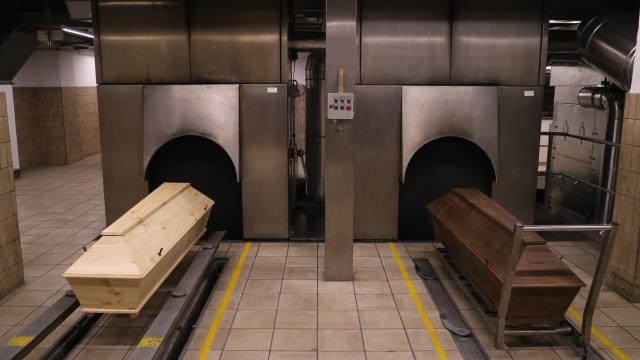An Arizona crematorium was contaminated with radiation after the cremation of a patient who’d received radiopharmaceutical treatment, according to a new case study.
Radioactive materials have a variety of uses in medicine, for both diagnosis and treatment. An occasionally overlooked matter is what to do with the body after the patient has died, a problem for which there are no federal regulations. Exposure to radiation contamination after the cremation of a patient who received radiopharmaceutical treatment is especially important here in the United States, where the cremation rate is higher than 50 per cent.
“Without regulation, communication is really important” in cases like this, Kevin Nelson, study author in the Department of Diagnostic Radiology at the Mayo Clinic in Phoenix, Arizona told Gizmodo. That communication did not happen here.
The case study documents a 69-year-old man with an uncommon tumour in his pancreas who received a radioactive treatment intravenously, called lutetium-177 dotatate. He unexpectedly died two days later at a different hospital from where he was receiving his radiation treatment. That hospital did not tell the funeral home/crematorium about his radiation treatment, and he was cremated five days later.
Once the researchers found out about the case, they asked the Arizona Bureau of Radiation Control whether there were regulations in place for these situations. There were not, and the Bureau sent representatives to survey the crematorium. The researchers also tested a crematorium employee’s urine to determine whether the operator had inadvertently been exposed to the radioactive lutetium from the treatment.
Indeed, the equipment set off the Geiger counter used to measure the radiation, with a maximum exposure rate of 7.5 mR per hour when the counter was touching the equipment. That’s nearly 200 times the average radiation experienced by humans living at sea level, with the caveat that radiation exposure decreases quickly with distance, so the operator would not receive that level exposure just from standing in the room. Also, lutetium decays into non-radioactive elements, so after about two months there would be no detectable levels of radiation, said Nelson.
The crematory operator had no lutetium in his urine, but the researchers did find a tiny amount of the radiopharmaceutical treatment technetium 99m, perhaps from cremating someone else.
“The crematorium operator had never had technetium 99m administered as part of a procedure,” Nathan Yu, study author in the Department of Radiation Oncology at the Mayo Clinic in Phoenix, Arizona, told Gizmodo. “This brings to light one of the mechanisms by which there’s potential unnecessary exposure for crematory workers.”
The researchers noted that the operator probably didn’t receive more than the exposure limit set by the Nuclear Regulatory Commission. Still, according to the study published in the Journal of the American Medical Association, “further studies are needed to evaluate the frequency and scope of radiation contamination and health effects of repeated or long-term exposure of employees in crematoriums in the United States.”
I reached out to National Funeral Directors Association about what this meant for crematory operators, and a spokesperson provided the following statement:
Given the widespread use of radiation in nuclear medicine (diagnosis and treatment) and radiation oncology (cancer treatment) procedures in the United States and around the world, it is likely that crematory operators have cared for the bodies of individuals who have undergone such treatments. One of the tenets of National Funeral Directors Association’s Certified Crematory Operator Program™ is to ensure that the crematory operator has the necessary information about the decedent to conduct the cremation safely. Crematory operators are expected to be informed whether there are any devices, including pacemakers, radioactive implants, or other implanted devices that may possibly require special precautions when placed in a cremation chamber and subjected to heat.
This article reports on a single case involving the cremation of an individual who had been treated with a particular radionuclide for a pancreatic tumour and who died a short time after treatment and was cremated five days after treatment. Prior to the cremation, no notification of cancer treatment was provided to the crematory operator, including whether safety precautions were advisable under the circumstances. NFDA supports further study of this issue and welcomes recommendations on how the health and safety of crematory staff and the community can be protected to the greatest degree possible, including, as the research letter suggests, by evaluating radioactivity in deceased patients prior to cremation and by ensuring that crematory operators receive notification sufficient to employ the proper safety precautions, if needed.
This isn’t the first time someone’s realised that radiopharmaceutical patients can leave behind residual radiation, but it’s one of the first studies to report the contamination of the facility itself. Still, it’s just a case study, meaning it’s not necessarily representative of a pattern. The authors of the study recommend that facilities should test deceased patients for radioactivity prior to cremation.
Yu told Gizmodo that the next step is to “identify the frequency and scope of this issue, and see if there are any potential effects for repeated and long-term exposure for these employees.”
